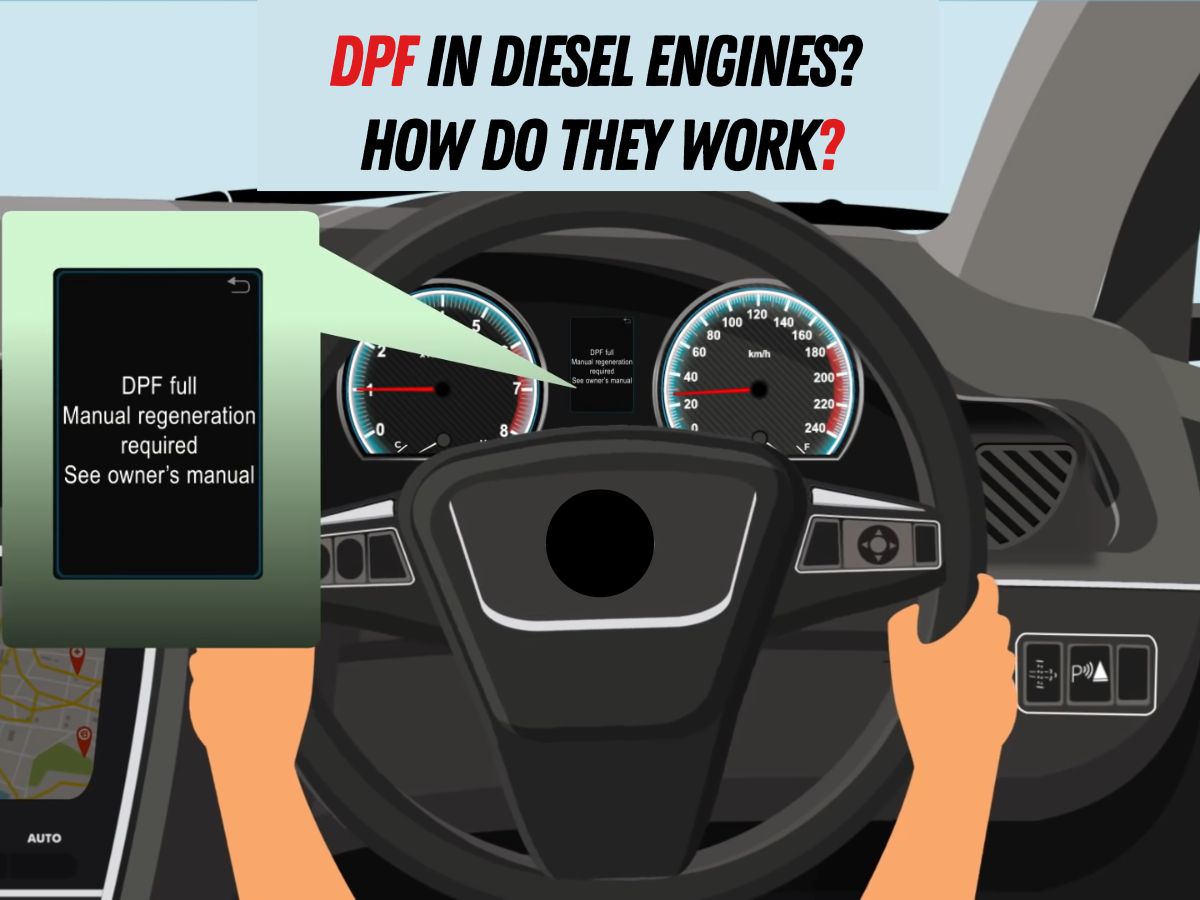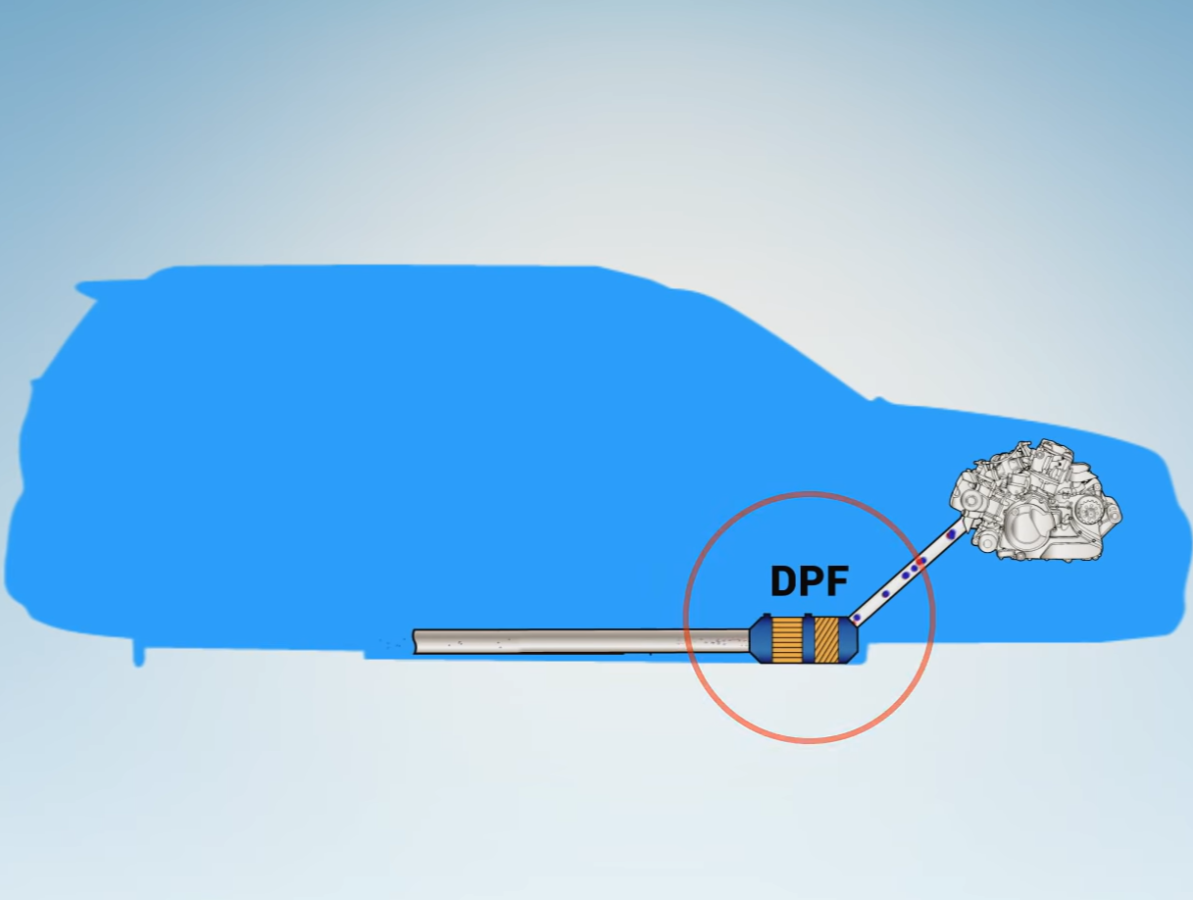DPF in diesel engines & its working

The world aims to move on from ICE engines and go ahead with alternative fuel options. Still, it is an embryonic stage and we are gradually adapting to the change. The increasing environmental pollution and global warming have forced combustion cars to become cleaner. Regulatory bodies have made it mandatory for all automobile manufacturers to limit emissions. Petrol cars have a separate mechanism to deal with these emissions norms whereas diesel cars have a separate mechanism. To solve this problem, the DPF comes into action. All BS6 diesel engines are generally equipped with a DPF to control the number of emissions. It is a filter system that makes diesel vehicles run cleaner. Let’s take a deep insight into DPF in diesel engines, understanding its details and working.
Requirement of DPF in diesel engines

Diesel engines burn more gases due to the higher energy quotient per volume. It emits complex compounds of organic gases in addition to carbon dioxide, carbon monoxide, nitric oxide, and nitrogen dioxide. Soot is emitted from the exhaust that is known to be harmful to living things. To limit the emission of soot in the environment, diesel engines now come equipped with a DPF system. DPF is no new technology. It has been present for long in many cars in the global market. The whole DPF system came into existence in 2006 when Euro 5 emissions were standardized. Currently, all cars with big engines have a DPF.
DPF working in diesel engines

Basically, there are two types of DPF regeneration. First, that works independently without any fuel additive whereas, the second system uses fluid to regenerate the particular matter. In India, cars largely use the latter system that requires refilling the AdBlue fluid for efficient working of the DPF. In this system, the fluid acts as a catalyst as well as a binding substance that helps filter particulate matter effectively. The fluid makes sure that most of the harmful matter is separated from the gases and is not permitted in the atmosphere. The fluid binds the harmful particles in the filter.
The fluid also acts as a catalyst and accentuates the burning of the harmful particles at higher temperatures to allow them out of the system cleanly during regular running. The constant occurrence of this process makes the filter walls clogged by harmful residuals that still cannot be converted into gases and pushed out of the system without a proper regen. With various sensors and infographics, the car senses that the filter should be regened and it shows a warning light.

Now, high temperature levels are required in the exhaust system to burn out the remaining harmful matter efficiently. After the desired temperature is achieved, the harmful matter burns with a chemical reaction escorted by the fluid (which once acted as a binding substance), essentially cleaning the filter. This whole process is called regeneration. Hence it is required to drive the car on highways at relatively high speeds and higher RPMs. Usually, engines use more fuel to maintain that high RPM which result in high temperature in the exhaust system, which justifies your car using more fuel while regeneration.
The main purpose of DPF is to not let harmful Nitrogen Oxide (NO2) gas in the atmosphere. This whole system separates the harmful NO2 into Nitrogen (due to chemical reaction with AdBlue) and water vapour. This process makes sure that there are less harmful pollutants emitted by diesel engines.
Tips for maintaining DPF
Driving on Highways
To maintain a proper working DPF, make sure you drive your car at higher speeds. Maintain authorized speed on highways without breaking any speed limits. Make sure to take your car on motorways so that regen can take place due to higher temperatures.
Avoiding Traffic
Traffic is very irritating and also consumes time. All drivers detest traffic. DPFs also hate it. Driving in traffic for a prolonged time and at low speeds usually, clog the DPF filters which deplete their performance.
AdBlue levels
Maintain adequate levels of the fluid so that smooth regeneration can take place. Make sure to carry a can of AdBlue while going on a prolonged journey.
Service
Make sure that you always maintain your car. Proper servicing of the car by replacing oil, changing various filters, EGR cleaning, and other maintenance should be done at designated time intervals.
If you have car buying doubts click here to ask! Get the lowest price for car insurance here. For more such content stay subscribed to MotorOctane Youtube, Google News Facebook, and Twitter. Also, follow us on Flipboard and Reddit where we have a discussion community.

Comments